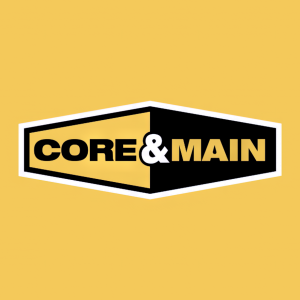Welcome to our dedicated page for Core & Main SEC filings (Ticker: CNM), a comprehensive resource for investors and traders seeking official regulatory documents including 10-K annual reports, 10-Q quarterly earnings, 8-K material events, and insider trading forms.
Scrolling through Core & Main’s lengthy disclosures to pinpoint how municipal backlogs or copper costs affect margins can feel overwhelming. Every 10-Q weaves in construction cycles and inventory swings, while each 8-K covers sudden contract wins or supply-chain shifts—details that aren’t always easy to spot.
Stock Titan solves that problem. Our AI reads every Core & Main quarterly earnings report 10-Q filing and annual report 10-K, highlights segment revenue, and flags language about infrastructure funding in seconds. Need real-time alerts on Core & Main insider trading Form 4 transactions? You’ll get them the moment they hit EDGAR, along with plain-English explanations. From Core & Main 8-K material events explained to Core & Main proxy statement executive compensation tables, our platform keeps the full filing stack—10-K, 10-Q, 8-K, S-4, DEF 14A—updated continuously.
Use cases include:
- Comparing backlog commentary across quarters without reading 200 pages.
- Tracking Core & Main executive stock transactions Form 4 before new infrastructure legislation.
- Running a Core & Main earnings report filing analysis to see how price pass-through impacts gross margin.
Core & Main insider Mark R. Witkowski exchanged and sold equity on August 18, 2025. He converted 100,000 Paired Interests (Class B common stock plus limited partnership interests) into 100,000 shares of Class A common stock on a one-for-one basis, then sold 100,000 shares of Class A common stock under a Rule 10b5-1 trading plan at a weighted average price of $64.0821 per share. After these transactions, the reporting person directly beneficially owned 35,847 shares of Class A common stock.
The filing also discloses that 100,000 vested common units held by the reporting person were redeemed for 100,000 Paired Interests under the Management Feeder LLC agreement, and that certain securities are held indirectly by Management Feeder representing 616,250 shares of Class A common stock. The sales were effected pursuant to a 10b5-1 plan adopted April 17, 2025.
Core & Main, Inc. (CNM) filed a Form 4 reporting insider activity by director Orvin T. Kimbrough on 18 Jul 2025. The filing shows multiple equity-for-unit exchanges and one sizeable open-market sale.
Key actions: (1) Redemption of 5 vested management units into 5 Class A shares; (2) exchange of 23,957 Class B shares & limited-partnership interests ("Paired Interests") for 23,957 Class A shares at $0; (3) open-market sale of 23,962 Class A shares at a weighted-average $61.7684 under a Rule 10b5-1 plan, generating roughly $1.48 million; (4) 1,038 derivative units withheld for distribution adjustments.
Post-trade holdings: direct Class A stake drops to 13,958 shares (from 37,920 pre-sale). Indirectly, the director still controls 29,747 Paired Interests through Core & Main Management Feeder, LLC. The transactions appear to be personal portfolio rebalancing and do not alter CNM’s capital structure or provide new financial guidance.
Core & Main, Inc. (CNM) – CEO Form 4 filed 21-Jul-25
On 17-Jul-25, Chief Executive Officer & Director Mark R. Witkowskiconverted 100,000 “Paired Interests” (Class B common stock + LP units) into an equal number of Class A shares at $0 cost under the 2021 Exchange Agreement. The shares were then sold the same day, pursuant to an April-25 Rule 10b5-1 plan, in two open-market blocks: 72,331 shares at a weighted-average $61.1239 and 27,669 shares at $61.6298, raising roughly $6.1 million.
Following the sales, Witkowski’s direct Class A stake fell from 135,847 to 35,847 shares. He retains indirect exposure to 716,250 Class A-equivalent units through Core & Main Management Feeder, LLC and another 100,000 exchangeable Class B/LP units held directly, so the officer continues to hold a sizeable economic interest despite the disposition.
No new derivatives were granted; activity reflects routine conversion and liquidity management. Nevertheless, the disposition of the full 100 k converted shares (≈74% of direct holdings) represents a meaningful reduction in the CEO’s freely-tradable stock and may be viewed by investors as a modestly bearish signal, partially offset by pre-planned execution and remaining indirect ownership.


